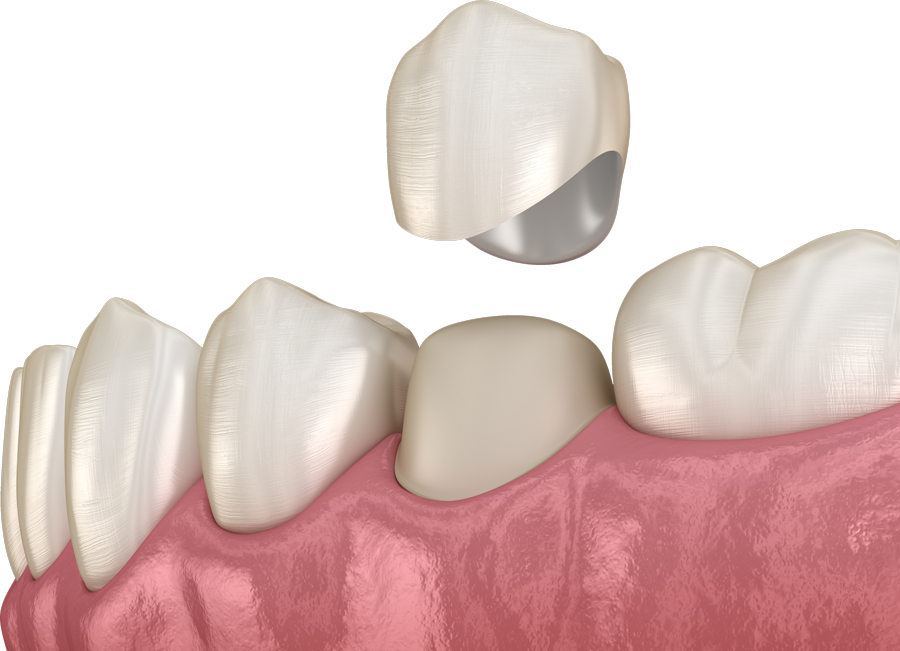What’s the Difference Between Dental Crowns and Veneers?
 Dental crowns and veneers work in similar ways, but they are not the same. Crowns can hide dental imperfections, but in a different way than veneers. A dental crowncovers an entire tooth, whereas a veneer covers only the front of a tooth. Dr. James M. Stein in Boston, MA practices state-of-the-art digital dentistry. With digital scanning and technology, modern crown and veneer applications are much easier and more comfortable than they were in the past.
Dental crowns and veneers work in similar ways, but they are not the same. Crowns can hide dental imperfections, but in a different way than veneers. A dental crowncovers an entire tooth, whereas a veneer covers only the front of a tooth. Dr. James M. Stein in Boston, MA practices state-of-the-art digital dentistry. With digital scanning and technology, modern crown and veneer applications are much easier and more comfortable than they were in the past.
Below we want to consider more differences between crowns and veneers. This should give you some idea on if one treatment is more ideal for your needs than another.
Dental Crowns
Dental crowns restore the form, function, and appearance of the teeth when restorations such as fillings, inlays, and onlays will not suffice. Crowns can be designed with various materials: zirconia, ceramic, all-metal alloys, or porcelain fused to a metal (PFM) alloy.
Dr. Stein color-matches porcelain crowns for a durable, natural-looking restoration that blends seamlessly with surrounding teeth. Crowns are often used for:
- Treating severe cavities
- Treating a cracked or fractured tooth
- Correcting major cosmetic imperfections
- Replacing lost teeth (supported by a dental implant)
Advantages of Dental Crowns
There are many advantages to placing a dental crown:
- Extra support for the entire tooth
- Thicker than a veneer
- Durable and resistant to cracking from regular wear and tear
- Insurance may cover a portion of the cost
Disadvantages of Dental Crowns
While there are many benefits to placing a crown, there are some important downsides to consider:
- Crowns can be somewhat expensive
- The restorations may appear bulky on front teeth
- Porcelain-fused-to-metal crowns may show a dark line at the base of the restoration
- Requires significant reduction/removal of natural tooth enamel
Dental Veneers
Over the last 30 years, the overall quality of veneer materials and craftsmanship has advanced a great deal. Wafer-thin and stain-resistant, a veneer is adhered to the surface of a front tooth to conceal aesthetic flaws. A veneer can be placed on the top teeth, bottom teeth, or both. Dental veneers can be used to treat:
- Tooth discoloration/permanent stains
- Minor malocclusion
- Gaps and overlaps
- Chips
- Malformations
Advantages of Dental Veneers
Some of the key advantages of dental veneers include:
- Less invasive procedure than placing a crown
- Virtually indistinguishable from natural teeth
Disadvantages of Dental Veneers
Despite the cosmetic benefits, some key drawbacks of veneers include:
- Doesn’t offer structural reinforcement of a tooth
- As a cosmetic procedure, it is not covered by insurance
Dental veneers are a commitment and must be treated with care. Though the tooth-colored material used for veneers is very strong, it can chip and crack if placed under significant pressure.
Which Treatment Is Right for Me?
Crowns and veneers address specific dental problems. Crowns restore well-worn or cracked teeth to restore appearance and function. Veneers are for solely cosmetic purposes and can correct minor flaws.
During your consultation at our Boston practice, we can determine if one option is more ideal for your needs.
Discover If Crowns or Veneers Are Best for You
Dr. Stein will give you a comprehensive oral exam, look at your x-rays and dental records, then provide information to help you make a wise, informed choice about crowns or veneers. Contact our practice online or give our Boston office a call at (617) 227-6076.






